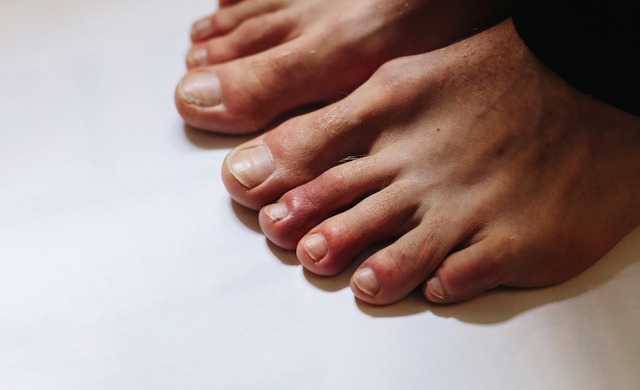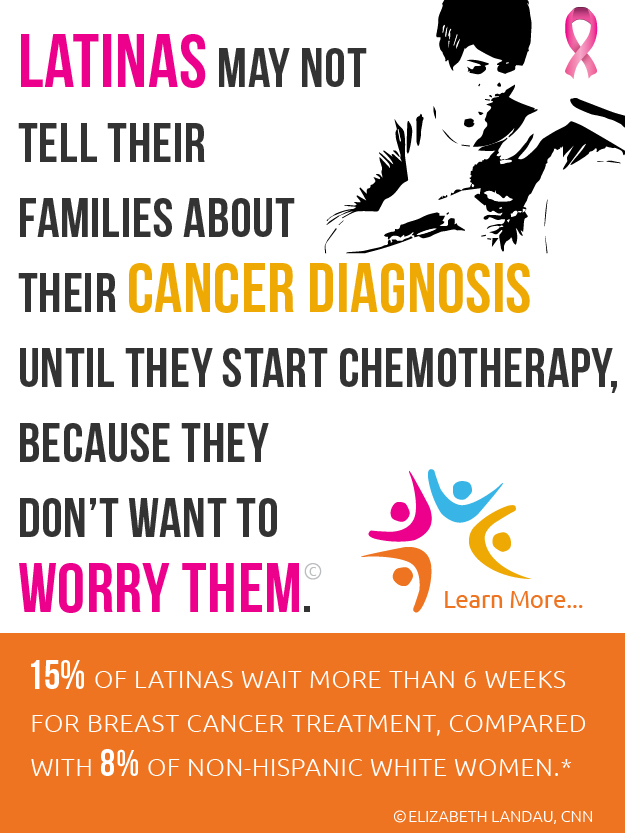
Unusual Symptoms of COVID-19 You Need to Know About
06/19/2020 06:00AM | 5027 viewsby Rachel Nania, AARP, Updated May 27, 2020
From nose to toes, doctors continue to discover uncommon signs of coronavirus infection
Fever, cough and shortness of breath are not the only warning signs of a coronavirus infection, even if they are the most common. In recent weeks a growing number of doctors have documented a handful of otherwise unexpected symptoms in patients with COVID-19, the illness caused by the coronavirus.
Some are reporting red or purple lesions on patients’ hands and feet; others are treating people with diarrhea and severe appetite loss. There are also patients who have lost their sense of taste and smell. These symptoms, strange as they may seem, reinforce what experts around the world have come to realize in recent weeks: The coronavirus is capable of causing more than a respiratory illness; it can launch a full-body attack.
“It takes a while for the full range of symptoms to kind of be known” when you’re dealing with a new virus, explains Lisa Winston, M.D., an epidemiologist and professor of clinical medicine at the University of California, San Francisco. At the start of the U.S. outbreak, the focus was primarily on treating the sickest patients, many of whom experienced classic respiratory symptoms and needed help breathing. “And then, as time went on and people saw more cases, they started to recognize some of the things that are a bit less typical,” Winston says.
Here are some uncommon signs of COVID-19 that fall outside the hallmark symptoms.
‘COVID toes’
If you had asked dermatologist Esther Freeman, M.D., last year what type of skin ailment a future viral pandemic might bring about, she never would have predicted red- and purple-colored toes that swell, burn and itch. But that’s exactly what she and other experts are seeing in patients with coronavirus infections, leading this unusual symptom to be dubbed “COVID toes.”
“The good news is, they do go away,” says Freeman, director of Massachusetts General Hospital Global Health Dermatology and assistant professor of dermatology at Harvard Medical School, who is also overseeing an international registry that catalogs the dermatological manifestations of COVID-19. “So we’re not seeing that this is going to cause permanent damage.”
Another plus: The majority of people with COVID toes — which Freeman likens to chilblains (also called pernio), an inflammatory skin condition that often occurs after exposure to very cold temperatures — don’t experience other symptoms of a coronavirus infection and don’t require hospitalization for care. “Many patients are developing these toe lesions well after their infection, or they’re otherwise completely asymptomatic, except for the toes,” she adds.
Though most cases of COVID toes occur in the feet, the hands can be affected, too. Rashes similar to those that result from hives and chicken pox have also been reported in people who test positive for the coronavirus.
For the latest coronavirus news and advice go to AARP.org/coronavirus.
As for how and why these skin conditions are happening, Freeman says, “Our knowledge on this is still evolving.” It could be an inflammatory response to the virus, for example, or even a result of small blood clots in the blood vessels of the skin. (Medical experts have reported concerning clotting issues in patients with COVID-19.) “I think that over the coming months, we’re going to learn a lot more about why this is happening,” Freeman adds.
If you notice a lesionlike rash on your hands or feet, contact your doctor or dermatologist about your symptoms, since it could signify a coronavirus infection. That said, it’s important to keep in mind that “not everything on your toes right now is from COVID,” Freeman says. “There’s certainly lots of other things that can appear on the feet, and there’s things that can even look similar,” which is why it’s important to talk with an expert. There is no specific treatment for COVID toes, but a high-potency topical steroid might reduce inflammation.
One thing to note, however, is that a doctor won’t be able to tell if the virus is still active in your body just by looking at your skin. “So the safest thing to do is to follow CDC guidelines for self-isolation and to discuss with your board-certified dermatologist or other physician whether COVID testing might be right for you,” Freeman advises.
Diarrhea, nausea, vomiting and severe appetite loss
COVID-19 is producing symptoms of diarrhea, nausea, vomiting and appetite loss in a number of patients young and old. A recent study out of Stanford University School of Medicine found that nearly one-third of 116 patients infected with the coronavirus reported mild gastrointestinal (GI) symptoms. Earlier reports showed that among roughly 200 patients in China, more than half experienced diarrhea, nausea or vomiting. The Centers for Disease Control and Prevention (CDC) has also acknowledged GI issues on its list of COVID-19 warning signs.
“There’s no question at this point that GI symptoms can be a manifestation of COVID-19,” says William Chey, M.D., professor of gastroenterology and nutrition sciences at the University of Michigan. And oftentimes these symptoms can come on even in the absence of “the more typical and recognized” markers of a coronavirus infection, such as fever and cough, he adds.
Experts point to a few explanations for the tummy trouble. Chey says the virus can directly infect the cells that line the GI tract, which is why some patients can test positive for the virus with a stool sample, even if results from a nasal swab come back negative. GI issues could also be an indirect result of the body’s fight against infection.
If you don’t have a history of GI trouble and experience a sudden onset of diarrhea, nausea, vomiting or loss of appetite — with or without other COVID-19 symptoms — check in with your doctor. Your symptoms might warrant a coronavirus test.
And if you are diagnosed with COVID-19, consider confining yourself to your own room and bathroom, separate from others in your house. Chey says it’s not yet clear whether the virus can be transmitted fecal-orally, but if that is the case, “you should not be sharing a toilet with somebody that has COVID-19 unless, obviously, you have no other choice.”
A few other tips: Disinfect bathroom surfaces often, especially high-touch areas such as toilet and sink handles. Don’t share toilet paper rolls with someone who has COVID-19, and always flush with the cover closed, to minimize the spread of germs. Finally, continue to be vigilant about personal hygiene. “This whole issue about meticulous hand hygiene is so unbelievably important,” especially if the virus is spread by the fecal-oral route, Chey emphasizes. “People need to wash their hands and not touch their face.”
Save 25% when you join AARP and enroll in Automatic Renewal for first year. Get instant access to discounts, programs, services, and the information you need to benefit every area of your life.
Loss of taste or smell
On the CDC’s recently expanded list of common COVID-19 symptoms, one newcomer stands out. In addition to fever, chills and a sore throat, the public health agency now recognizes new loss of taste or smell as evidence of a coronavirus infection.
“People who have colds, if they get a really stuffy nose, they may complain of lack of smell, but, you know, that’s sort of an unusual [symptom] right now in the absence of COVID,” UCSF’s Winston says. But it may be one of the best indicators of a coronavirus infection.
A new study published in the journal Nature Medicine tracked more than 2.5 million participants who reported their potential symptoms of COVID-19 on a smartphone app. About 65 percent of people who tested positive for COVID-19 reported loss of taste and smell, making it one of the strongest predictors of the illness among those studied. Similarly, researchers from the University of California, San Diego, found that smell and taste loss were reported in 68 and 71 percent of COVID-19–positive subjects, respectively.
“But we don’t always ask those questions [about loss of taste or smell] when we are in the busy emergency room,” says XinQi Dong, M.D., director of the Institute for Health, Health Care Policy and Aging Research at Rutgers University-New Brunswick. When triaging patients, many health care workers “have been focused on the primary symptoms that they know to ask.”
Neurological effects complicate diagnosis in older victims
This is starting to change, though. Loss of taste and smell, which usually return after the virus runs its course, are two symptoms on a growing list of neurological effects doctors are noting in COVID-19 patients. Other indicators of the illness include dizziness, headache and confusion. In fact, a study in JAMA Neurology found that more than 36 percent of 214 patients in Wuhan, China, experienced neurological symptoms during their bout of COVID-19.
For older adults, in particular, these neurological effects can be just as devastating as the pulmonary impacts of a coronavirus infection, Dong says. They can also be easily overlooked or dismissed as dementia or other diseases common with aging.
Neal Sikka, M.D., an associate professor of emergency medicine at George Washington University in Washington, D.C., says broader coronavirus testing is key to distinguishing COVID-19 patients from those who are suffering from a stroke or experiencing a complication from an underlying health condition.
“We’re trying to be very vigilant and broad in our thinking” when a patient comes into the emergency room with confusion or change in mental status, Sikka says. “That could be some other type of infection; it definitely could also be a presentation of COVID. And so we are trying to do rapid testing on those patients to identify them early.”
And this catchall approach is what Dong expects will become the norm going forward, especially as health care providers learn about the different ways a coronavirus infection can show up in the body.
“You know, we started by thinking about COVID as very similar to SARS [severe acute respiratory syndrome] and MERS [Middle East respiratory syndrome],” which are two other respiratory illnesses caused by coronaviruses. “But this — there’s something different about this virus,” Dong says. “We’re catching up now, but if we had focused on not just fever, shortness of breath and dry cough, I think we might have caught more potential symptoms much earlier, especially in vulnerable older adults.”
Blood clots
Health care professionals are taking note of a troubling trend among coronavirus patients: blood clots. Some studies have found that as many as 30 percent of people with severe cases of COVID-19 experience clotting complications. Clot specialist Alex Spyropoulos, M.D., estimates that the number is even higher. The internist and professor of medicine at the Donald and Barbara Zucker School of Medicine at Hofstra/Northwell says that “as many as 40 percent” of patients who are hospitalized because of a coronavirus infection die from blood clots, including micro clots, and the destruction they can cause (heart attack, stroke, lung damage and the like).
“The risk of blood clots are anywhere from about three- to sixfold or greater, more than we’re used to seeing,” Spyropoulos adds. “It has us all in the academic community a little bit befuddled, because it’s one of the most aggressive diseases with respect to blood clots that we’ve ever seen.”
As for what’s behind the clots, the answer is still unclear. They may be directly caused by the coronavirus and its interaction with the clotting pathway, Spyropoulos says. A hyperimmune response is another explanation experts are exploring. Then there’s the state of being critically ill, which Babak Navi, M.D., division chief for stroke and hospital neurology at Weill Cornell Medical College and a neurologist at NewYork-Presbyterian Hospital, says can provoke clotting.
“It’s well known that infections and inflammations are potent triggers and risk factors for clotting events, including stroke,” Navi explains.
If you have clotting issues, the best thing you can do — especially during the coronavirus outbreak — is take your blood thinner medication as prescribed, Spyropoulos advises. And if you experience symptoms of a blood clot (pain, redness, swelling) or a stroke (confusion, dizziness, numbness), “take them extremely seriously and go right to the emergency department,” Spyropoulos adds.
Researchers are exploring whether blood thinners could be a more routine course of care among hospitalized COVID-19 patients. A study out of New York City’s Mount Sinai Health System found that patients who were treated with anticoagulants had improved outcomes both in and out of the intensive care unit.
“As a cardiologist who has been on service caring for COVID-19 patients for the last three weeks, I have observed an increased amount of blood clot cases among hospitalized patients, so it is critical to look at whether anticoagulants provide benefits for them,” coresearcher Anu Lala, M.D., assistant professor of medicine at Mount Sinai’s Icahn School of Medicine, said in a statement.











Post your Comment
Please login or sign up to comment
Comments